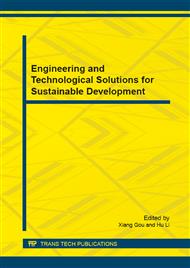p.536
p.542
p.549
p.554
p.558
p.563
p.568
p.576
p.580
Nutrient Limiting Factors in Red-Yellow Soil from Different Parent Rocks at Oil-Tea Forest Land in the South-Central Region of China
Abstract:
Nutrient limiting factors in main soils from oil tree forest land of the south-central region in Hunan Province were assessed by employing the systematic approach developed by Agro Services International and selecting Sorghum as indicate plant in order to evaluate their nutrient status and limiting factors. The results of soil testing showed that the four oil tree forest land soils were low in organic matter, N, P, K was severely deficient, but the available S and Fe were sufficient, the deficiency of Ca, Mg, B, Zn and Mo were rather common. In the tested oil tree Camellia forest land soils, the larger capacity of adsorption and fixation belonged to K, Zn, Mn in Quaternary red soil and to B in Sandstone soil, while the capacity of adsorption and fixation of K, B in Phyllite soil land and P, Mn, Zn in Granite soil was weak. The results of pot experiment showed that its nutrient deficient degree was in the order of N>P>K>B>Mo>Mn in Granite soil; that was in the order of K>P>N> Zn in Sandstone soil; that was in the order of P>N>K>Cu>Zn>Mn>Mo>S in Phyllite soil; that was in the order of N>P>K>Zn>Mo>Cu>B in Quaternary red soil. So P, N and K were the main nutrient limiting factors of oil tree forest land soils in Hunan province, and then followed by Zn, B and Mo. Next field experiments should be focused on the balanced fertilization of N, P, K, and B, Zn, Mo. Moreover, much attention should be paid to make up Ca and Mg.
Info:
Periodical:
Pages:
568-575
Citation:
Online since:
November 2014
Authors:
Price:
Сopyright:
© 2014 Trans Tech Publications Ltd. All Rights Reserved
Share:
Citation:


